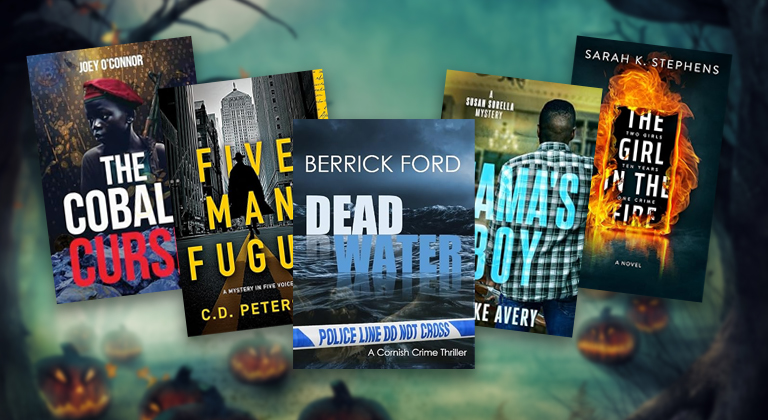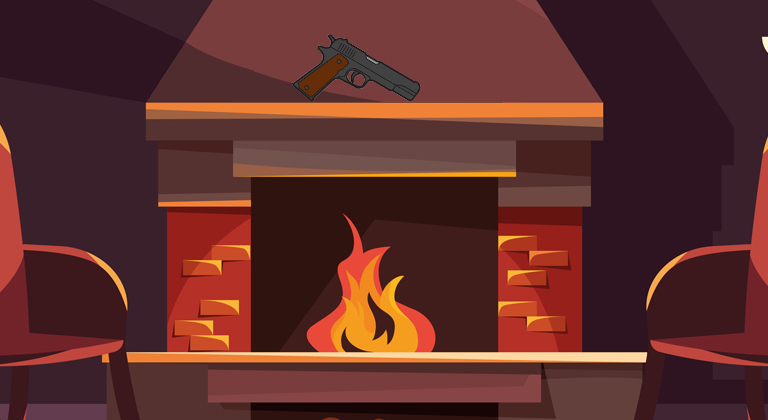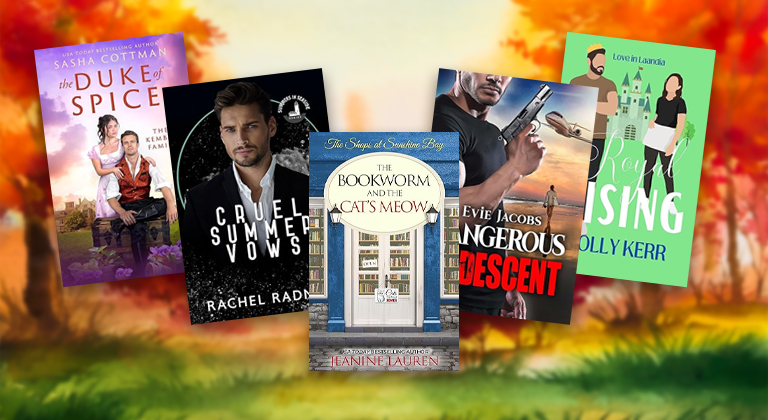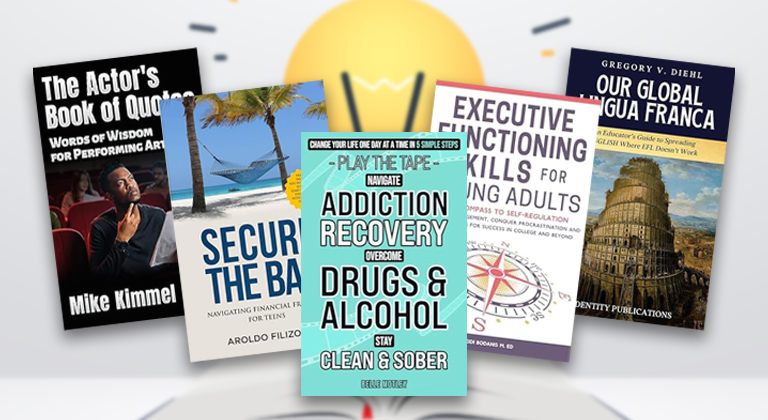When to throw out your first draft?
For some authors, the common advice to “throw out your first draft” is the stuff of nightmares, but it should only be that scary if you’re taking it too literally. It’s rarely (if ever) necessary to just toss your book out and forget about it altogether! The point is more about how an author must sometimes be willing to tear their first draft down completely and rebuild it into a better or more marketable book. But the question is, how do you know when that’s needed? In his continuing series on turning your writing dreams into reality, Ginger lays out when and why you may need to go this route.
If you’re serious about becoming a successful self-published author, you have to make some serious decisions about what you’ve already written and published; and sometimes, you’ll have to go right back to the drawing board.
Ernest Hemingway warned authors that “your first draft of anything is sh*t.” Terry Pratchett worded it a little more elegantly when he explained: “The first draft is just you telling yourself the story.” In any event, when you finally finish your first novel – you probably haven’t even started.
This is a very, very, very bitter pill for authors to swallow, and I speak from experience. I completed my first full-length novel in 2006 and published it on Amazon in 2011 and to this date, I don’t think I’ve ever managed to sell a single copy of it.
Under my romance penname, I first started writing full-length novels in 2015, and the pushback I got from readers was immediate and undeniable. It wasn’t that my stories weren’t good, my characters weren’t developed, or that I was a bad writer – I was just doing everything wrong for that genre.
It was a very difficult decision to step back, accept that I still had a lot to learn, and slowly start trying to figure things out; and I’m still learning to this day. Ernest Hemingway was also right when he warned authors: “We are all apprentices in a craft where no one ever becomes a master.”
I’m writing today’s blog post because I’ve found myself in that very situation, and it’s interesting to approach the predicament with the experience of having written and published 25 full-length novels to guide me. I have an advantage most authors just starting out don’t – I know when something I’ve written isn’t going to be successful, and I have the tools and knowledge with which to fix it.
Let me show you how.
Craft, not art
One of the things I constantly repeat in these blog posts is that writing is a craft, not an art. Art inherently has no value except to those who find meaning in it – which is why Gerhard Richter managed to paint a mirror red and sell it for $1.1 million.
Writing, however, has a purpose – to communicate something. Writing fiction has an even deeper purpose – to take the reader on a journey from one emotional state to another. To accomplish this, there’s a foundation that fiction has to be built upon, and certain decisions that need to be made while assembling your story.
Functionally, it’s no different to how a table has to have a flat surface to put things on, and some way to elevate it to a useful height. The first thing you learn in the craft of writing is how to craft these essential foundations.
Next, you have to learn how to assemble your story in a way that is functional for your intended audience.
It’s the same as how a carpenter has to decide whether the table he’s building should have four legs or one – or reach your knee or your chest. These choices dictate what sort of person is going to purchase the finished table. A customer wouldn’t buy a knee-high coffee table to put in the center of their dining room, just as you wouldn’t stick a high-top breakfast bar in front of your sofa.
The choices you make about how you tell your story are no less important. A craftsman has the responsibility to craft their product with the needs and expectations of their customer in mind, and as a writer you have that exact, same responsibility.
When I first started publishing romance novels, I thought I had it all figured out because I was writing a love story. Right?
Wrong!
I wrote the story in third-person, when all the successful books in my category were written in first-person with alternating male/female points of view.
I included infidelity, which I figured was okay because the hero and heroine eventually got together for the happily-ever-after – except in my category of romance, infidelity was an absolute no-go and I got tons of 1-star reviews as a result.
So even though I had written a perfectly comprehensible 70,000 word novel that told the story of a man and a woman falling in love, it in no way resembled any other love story in its category, and it flopped spectacularly.
Five years later, I can accept that it deserved to.
When a lot of first-time authors self-publish their first book, they often make the same mistake I did; and that’s why their books fail. They think that writing a comprehensible novel is all they need to do – not understanding that they have to mold and market that novel specifically for whichever audience they hope will buy it.
If they do possess that level of self-awareness – they then still have to do something about it; and that can sometimes involve having to tear apart and rewrite their novel from the ground up. Some authors simply don’t want to do that – or refuse to.
But that’s what I’m doing right now, and while it can be heart-wrenching to have to reinvent months of your hard work; the willingness to do so is what will make all the difference in the success of your writing career. It will literally make or break how well your books perform on Amazon and beyond; and that makes success or failure a choice on your part.
People aren’t obligated to read your book
Read the heading of this paragraph again.
This is one of the first and most essential truths about writing and publishing, and it’s one many authors just starting out fail to grasp. I know that was the case with me!
After all, we’ve spent weeks or months writing our book. People should read it! It’s important!
But ask yourself: When was the last time you read a book? If you answered in anything other than days (i.e. weeks or months) then you’ll know what you’re up against.
Reading books is a time-consuming process that many people don’t have the opportunity to do in their hectic lives. When we do take the time to choose a book to read, we’re very careful about what that book is. To have a reader choose to read your book is an incredible privilege – and one you have to earn.
This is why I’m still incredibly appreciative when I talk to anybody who’s read one of my books – regardless or not of whether they paid for it. Tim Ferris told us “attention is the new currency” and to have had somebody voluntarily spend that attention on me is amazing and I’ll never stop being grateful for it.
Compare and Contrast
So, when you’ve completed your first book – put it aside and head over to Amazon. Look at the books and authors that inspired you to start writing in the first place – and see how your book measures up against them.
Then go to the category of your book and look at the Top 100. It’s all stuff I outlined in my last blog post, but this time do it in the context of your finished manuscript.
You want to look at your cover, your blurb, your look-inside – everything. Normally, you can tell just at a glance whether or not your book looks like it would fit among the others in the Top 100 for your chosen genre. There are normally two or three distinctive ‘styles’ of cover in any one category (for example, the sans-serif covers of Lee Child or the typeface of James Patterson set the standard for thriller covers) and if your book falls too far outside of that, it’ll likely fail.
It doesn’t matter how good you think your book is, or what justification you have for having a cover that looks different – readers don’t care. Your cover is like a gang tattoo; it shows a commitment to the genre and audience of your chosen category, and readers won’t trust your book unless you’re displaying that tattoo.
Once you’ve faced that reality, it’s time to pick some of the most popular books in your category and actually read them. You’d be surprised how many authors who want to be successful in fantasy or science fiction skip this step. Again, I speak from experience – I thought all the ‘blockbusters’ I’d read from my mother’s collection back in the 1980s had taught me all I needed to know about writing contemporary romance.
Boy, was I wrong!
Scroll through the Top 100 and pick a book that jumps out at you. If none of them do – well, maybe you’re looking in the wrong category.
If you’ve got a Kindle Unlimited account, you can explore and investigate a ton of books for free (well, for the monthly fee you’re already paying) – or else just eat the $2.99 or whatever and buy one of the titles in the Top 100.
Think critically about how their writing style differs from yours. Is the story written in third-person or first? Present tense or past? How long is the book? How long are the sentences, the chapters? All of these details are important.
If you’re serious about being successful, you should read at least one popular book in your chosen genre a week – even if you’re just skimming through it to look at the POV and the conventions. A good cross-section of books will tell you what might need to change about your own book.
For example, it took reading just three steamy contemporary romance books for me to accept that third-person was not the style that I should write in. I switched to first-person with alternating his-and-hers viewpoints for my next romance book and it instantly sold four times as many copies.
There are some things you don’t have to compromise on. I write in past tense, whereas a lot of books in my category stick to present tense. I didn’t budge on that – I hate the present tense, and I hate writing in it.
I can get away with that because I’m sticking to the alternating first-person POV for my book – so the reader gets the meat and potatoes they’d been expecting, even if I substituted the side order.
If I’d tried to get away with writing in past tense and third-person, though, I’d have probably failed.
Once you’ve got a good idea of what the standard for your genre or category is, it’s time to reexamine your completed manuscript and see how it stacks up. If there’s a fundamental difference, you have a responsibility to change it. Sometimes that can involve rewriting your entire book in a different POV; and if you want to be successful, that’s the sacrifice you’ll have to make.
Take it from me, though – it’s a sacrifice that’s worth it. I chewed my fingernails for months about switching POV – but I’ve never looked back since. Remember that the more reading you do, the better writing you’ll produce. Immerse yourself fully in your genre and you’ll go ‘native’ quicker than you can imagine.
Find your hook
Writing in the correct format for your intended audience is essential. I used the metaphor of carpentry earlier, and it’s an appropriate one. If you’ve crafted a high-top breakfast bar and everybody in your category is selling coffee tables, then you’ll have to make the difficult decision to saw two feet of length off the legs of your table so it’s literally on the same level as the rest of them.
This is the price you pay to be taken seriously in your category. Now, you have to earn your success.
The other thing a lot of first time authors fail to do is think of why somebody should read their book. What’s the hook?
If you can’t rattle off an elevator pitch for your book, you have to ask yourself whether or not your novel even has one! You want to have some compelling question, angle, or gimmick that makes it difficult for a reader to resist finding out more.
This is why I will often recommend that authors write their blurb before they write their book. (I’ve also accepted that I never follow this advice myself, even though it’s really, really good advice.)
Writing the blurb forces you to highlight what the appeal of the book is; and then that allows you to focus on highlighting that. A lot of authors fail to; and then they’re left with a completed manuscript but no clear idea what the ‘hook’ is.
There almost always is one; and if you’re really struggling it’s often worth consulting with somebody who writes blurbs for a living; as they can often see what the author can’t.
Also think about the last few books you read, or movies you watched, and ask yourself why. Then see if your book has an equally compelling call to action.
A lot of popular franchises will gain an audience simply because of who is responsible for them – people would flock to buy Stephen King’s latest book even if it was just him transcribing the phone book. Likewise, The Mandolorian show on Disney+ instantly scored fans because it existed in the Star Wars universe (whereas similar space-western Firefly was cancelled after one season.)
You probably don’t have that level of popular appeal – yet! – so you’ll have to work on making your book concept compelling.
A good example from the current Top 100 list is Dean Koontz’s new novel, Watchers. Regardless of his popularity as an author, the blurb poses a compelling situation that urges a reader to find out more:
A man, a dog, and a terrifying threat. On his thirty-sixth birthday, Travis Cornell hikes into the foothills of the Santa Ana Mountains. But his path is soon blocked by a bedraggled Golden Retriever who will let him go no further into the dark woods.
Immediately, I’m wondering what the deal with the dog is – and what it’s trying to protect Travis from. In just a few short sentences, Dean Koontz has posed a question that can only be answered by reading the book.
Today’s #1 in Contemporary Literary Fiction is Perfectly Impossible by Elizabeth Topp – and while the blurb doesn’t pose a question, it does present a protagonist with a problem that is achingly relatable (especially to me.)
An artist at heart, Anna works a day job as a private assistant for Bambi Von Bizmark. Caught between the staid world of great wealth and her unconventional life as an artist, Anna struggles with her true calling. If she’s supposed to be a painter, why is she so much more successful as a personal assistant?
From the bright and cheery cover, it’s a good guess that the book will have a Happily Ever After – and if Anna can figure out how to pursue her passion as an artist, maybe it’ll help me balance writing and personal responsibilities. Immediately, Elizabeth Topp landed an emotional hook, and that makes reeling in a new reader pretty simple.
So you have to have a reason for somebody to read your book; and if that’s not immediately obvious to you, it’s often a sign that you’ll have to tear your first draft apart and restructure it so that the reason for somebody buying your book is front and center.
Kill your darlings
Stephen King warned authors to “kill their darlings” and hacking apart a first draft often feels like that. However, it’s often the only way to take your brilliant ideas and characters and turn them into something that could be commercially successful.
Again, I speak from experience. I just finished 160,000 words of my latest novel; and on my first read-through I realized that it was unpublishable. It was far too long, focused too much on supporting characters, and didn’t present the love story front-and-center like a good romance novel should.
I’m rewriting the whole bloody thing.
Five years ago, when I started writing full length romance novels, I wouldn’t have known that. I’d have published it ‘as-is’ because it is still a coherent, well-written 160,000 narrative that comes to a satisfying conclusion. It’s not a bad book…
…it’s just a bad contemporary romance book.
I’m privileged in that I’ve written 25 full-length novels, so I know that it won’t be successful in its current format, and I can do something about it. I’ve also had enough failures to get over my own ego when it comes to not just killing my darlings, but burying them in a shallow grave.
First time authors don’t have that bitter experience to draw from.
But hopefully this blog post gave somebody out there some perspective, and they might learn from my mistakes instead of having to spend five years making their own.
Take a long, hard, ugly look at your manuscript and ask yourself whether or not it’s ready for prime-time. You can save yourself months of agony if you embrace that difficult task before you click ‘publish.’
In my next blog post, I’ll address some of the pointers when it comes to revising your book; but they’re not nearly as difficult to master as the uncomfortable realization that you have to make those revisions in the first place.












Arthur Quiller-Couch originally said “kill your darlings.” Stephen King was quoting him.